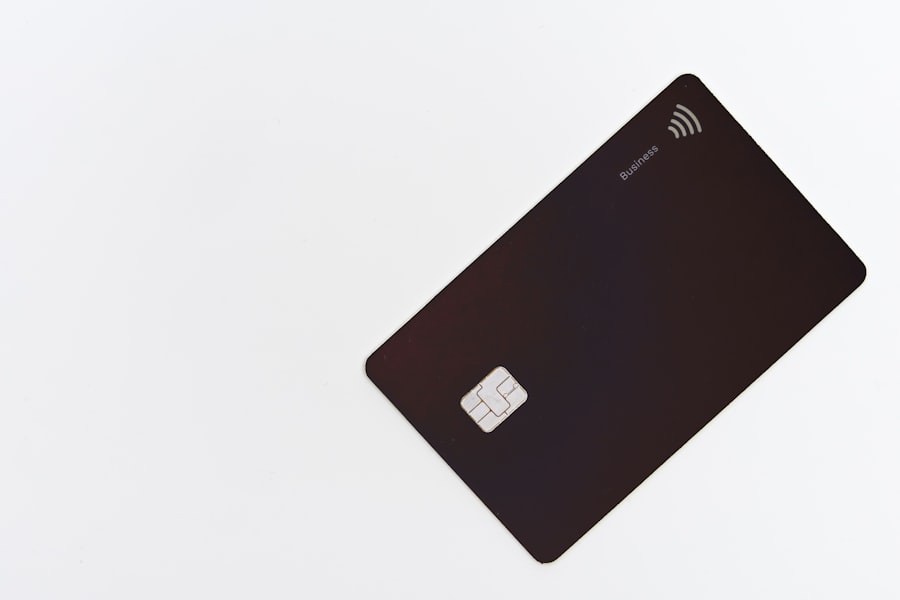Credit card rewards programs have become a cornerstone of consumer finance, offering cardholders the opportunity to earn points, miles, or cash back on their everyday purchases. These programs are designed to incentivize spending by providing tangible benefits in return. The structure of these rewards can vary significantly from one card to another, with some focusing on travel rewards, while others may emphasize cash back or specific categories like groceries or gas.
Understanding the nuances of these programs is essential for consumers looking to maximize their financial benefits. At the heart of most rewards programs is the concept of earning points or miles based on spending. For instance, a typical rewards card might offer one point for every dollar spent, while others may provide bonus points for specific categories such as dining or travel.
Some cards even offer tiered rewards, where spending thresholds unlock higher earning rates. Additionally, many credit cards come with sign-up bonuses that can significantly boost initial rewards, often requiring a minimum spend within the first few months of account opening. This initial incentive can be a powerful motivator for consumers to choose one card over another.
Key Takeaways
- Credit card rewards programs offer various incentives such as cash back, points, and miles for making purchases.
- When choosing a credit card, consider your spending habits, travel preferences, and the annual fee to find the right fit for you.
- To maximize points and miles, take advantage of sign-up bonuses, refer-a-friend programs, and strategic spending.
- Utilize bonus categories and promotions to earn extra rewards on specific types of purchases, such as dining or travel.
- Practice responsible credit card use by paying your balance in full each month, avoiding high interest rates, and monitoring your credit score.
Choosing the Right Credit Card for You
Selecting the right credit card involves a careful assessment of personal spending habits and financial goals. Different cards cater to various lifestyles and preferences, making it crucial to align your choice with your unique needs. For example, frequent travelers may benefit from cards that offer airline miles or hotel points, while those who primarily shop at grocery stores might find more value in cards that provide higher cash back rates for food purchases.
Understanding your spending patterns can help you identify which rewards structure will yield the most benefits. Moreover, it’s essential to consider the fees associated with credit cards. Some premium cards come with annual fees that can be justified by the rewards and benefits they offer, while no-annual-fee cards may provide a more straightforward option for those who prefer to avoid extra costs.
Additionally, interest rates and foreign transaction fees are critical factors to evaluate. A card that offers excellent rewards but comes with high-interest rates may not be the best choice if you plan to carry a balance. Therefore, a comprehensive analysis of both rewards potential and associated costs is vital in making an informed decision.
Maximizing Points and Miles

Once you have chosen a credit card that aligns with your spending habits, the next step is to maximize the points and miles you earn. This involves not only using your card for everyday purchases but also strategically planning larger expenses to take full advantage of your card’s earning potential. For instance, if your card offers double points on travel-related purchases, booking flights or hotels with your credit card can significantly increase your rewards balance.
Additionally, many credit cards allow you to earn extra points through promotional offers or partnerships with retailers. Another effective strategy for maximizing rewards is to utilize multiple credit cards in tandem. By having a mix of cards that cater to different spending categories, you can optimize your earnings across various purchases.
For example, using a card that offers high cash back on groceries while also having a travel rewards card for vacations can help you accumulate points more efficiently. Furthermore, keeping an eye on seasonal promotions or limited-time offers can provide additional opportunities to earn bonus points, enhancing your overall rewards strategy.
Utilizing Bonus Categories and Promotions
| Category | Promotion | Utilization Rate |
|---|---|---|
| Groceries | 10% cashback | 80% |
| Dining | Double points | 60% |
| Travel | Triple miles | 70% |
Many credit cards feature rotating bonus categories that change quarterly or annually, allowing cardholders to earn higher rewards rates in specific areas during designated periods. Understanding these categories and planning your spending accordingly can lead to substantial rewards accumulation. For instance, if a card offers 5% cash back on gas purchases during the summer months, filling up your tank during this period can yield significant returns compared to using a card with a flat rate.
In addition to rotating categories, many credit cards run promotional campaigns that offer bonus points for specific merchants or types of purchases. These promotions can be an excellent opportunity to earn extra rewards on planned expenditures. For example, if a credit card issuer partners with a popular retailer for a limited-time promotion offering double points on purchases made at that store, it would be wise to take advantage of this offer if you were already planning to shop there.
Staying informed about these promotions through newsletters or mobile apps can help you capitalize on opportunities that align with your spending habits.
Tips for Responsible Credit Card Use
While credit cards can provide numerous benefits through rewards programs, responsible usage is paramount to avoid falling into debt or damaging your credit score. One of the most critical aspects of responsible credit card use is paying off your balance in full each month. Carrying a balance not only incurs interest charges but can also negatively impact your credit utilization ratio, which is a significant factor in determining your credit score.
By maintaining low balances and paying on time, you can enjoy the perks of your credit card without incurring unnecessary costs. Another important tip is to monitor your spending closely and set budgets for different categories. Many credit card issuers provide tools and apps that allow you to track your spending patterns and categorize expenses.
By utilizing these tools, you can ensure that you stay within your budget while maximizing rewards. Additionally, setting up alerts for due dates and spending limits can help you manage your finances effectively and avoid late fees or overspending.
Redeeming Rewards for Maximum Value

The process of redeeming rewards can vary widely among credit cards, and understanding how to extract maximum value from your points or miles is crucial. Many consumers make the mistake of redeeming their rewards without considering the value they are receiving in return. For instance, redeeming points for merchandise may yield less value compared to using them for travel bookings or experiences.
Travel redemptions often provide higher value per point due to partnerships with airlines and hotels that allow for discounted rates. Additionally, some credit cards offer flexible redemption options that allow you to transfer points to airline or hotel loyalty programs. This transfer can often result in greater value than redeeming directly through the credit card issuer’s portal.
For example, transferring points from a flexible rewards program to an airline’s frequent flyer program may enable you to book flights at a lower point cost than if you were to redeem through the credit card’s own travel portal. Understanding these nuances can significantly enhance the value of your rewards.
Avoiding Common Pitfalls
Navigating the world of credit card rewards comes with its share of challenges and potential pitfalls that consumers should be aware of. One common mistake is failing to read the fine print associated with rewards programs. Many cards have restrictions on how points can be earned or redeemed, including expiration dates or blackout periods for travel bookings.
Being unaware of these limitations can lead to frustration when attempting to use accumulated rewards. Another pitfall is overextending oneself financially in pursuit of rewards. While it may be tempting to spend more in order to earn additional points or bonuses, this approach can lead to debt accumulation and financial strain.
It’s essential to strike a balance between earning rewards and maintaining responsible financial habits. Setting clear limits on spending and ensuring that any purchases made are within one’s budget will help avoid falling into this trap.
Leveraging Credit Card Benefits and Perks
Beyond earning points and miles, many credit cards come with additional benefits and perks that can enhance the overall value of holding the card. These may include travel insurance, purchase protection, extended warranties on products purchased with the card, and access to exclusive events or experiences. Understanding these benefits can provide added layers of value beyond just the rewards earned from spending.
For instance, travel insurance offered by some credit cards can cover unexpected expenses such as trip cancellations or lost luggage, providing peace of mind when traveling. Similarly, purchase protection can safeguard against theft or damage for items bought with the card within a specified timeframe. By leveraging these additional perks effectively, consumers can maximize their overall experience with their credit cards while enjoying both financial benefits and enhanced security in their transactions.
FAQs
What is a lit credit card?
A lit credit card is a term used to describe a credit card that offers attractive benefits, rewards, and features. It is often used to highlight the appealing aspects of a particular credit card.
What are the common features of a lit credit card?
Common features of a lit credit card may include cashback rewards, travel rewards, low or no annual fees, introductory 0% APR periods, and other perks such as concierge services, travel insurance, and purchase protection.
How can I qualify for a lit credit card?
Qualification for a lit credit card typically depends on factors such as credit score, income, and credit history. Those with higher credit scores and stable incomes are more likely to qualify for premium credit cards with attractive features.
What are the benefits of using a lit credit card?
The benefits of using a lit credit card may include earning rewards on purchases, accessing exclusive perks such as airport lounge access or hotel upgrades, building credit history, and enjoying consumer protections such as extended warranties and purchase protection.
Are there any drawbacks to using a lit credit card?
Drawbacks of using a lit credit card may include high annual fees, potential for overspending and accruing debt, and the temptation to chase rewards at the expense of responsible financial management. It’s important for cardholders to carefully consider their spending habits and ability to pay off balances in full each month.





